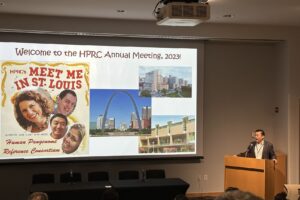From deciphering underlying genetic factors of diseases to developing cutting-edge genome technology, our scientists are making impactful discoveries everyday.
Strength in Genetics and Genomics Research
The Department of Genetics has traditional strengths in computational biology and genome science, as well as model organism, evolutionary and human genetics. Recent specialties include neurological disorders, cellular bioenergetics, epigenomics, personalized medicine and genome technology development.
We have established leadership in the following flagship NIH genomic medicine themed projects:
- The Human Pangenome Project (NHGRI)
- The Impact of Genetic Variation on Function (NHGRI)
- The Long Life Family Study (NIA)
- Somatic Mosaicism across Human Tissues (NIH Common Fund)
- Multi-Omics for Health and Disease (NHGRI, NCI, NIEHS)
- The BRAIN (The Brain Research through Advancing Innovative Neurotechnologies) Initiative Cell Atlas Network (NIMH)
Within the close-knit research community of Washington University School of Medicine, our scientists are supported by a strong foundation. School of Medicine Facts & Figures
| #2 NIH Funding (2023) | $838.3 Million Research Funding 2022 | 19 Nobel Laureates |
Latest News
Genetics department hosts NHGRI-funded consortia meetings
The Genetics Department at Washington University coordinates the effort of hosting meetings of National Human Genome Research Institute (NHGRI)-funded consortia. The consortia meetings span 5 days from 9.11 – 9.16 and took place on Washington University School of Medicine campus.
WashU leads new multi-omics production center for NIH research consortium (Links to an external site)
The National Institutes of Health (NIH) is channeling $50.3 million over the next five years into a new consortium dedicated to advancing the generation and analysis of multi-omics data for human health research.
Wang, nationally recognized geneticist, named head of genetics (Links to an external site)
Ting Wang, PhD, a national leader in genetics and genomics who has led groundbreaking studies in how the genome is regulated, has been named head of the Department of Genetics at Washington University School of Medicine in St. Louis. A computational biologist, he will begin his new role Aug. 1.


